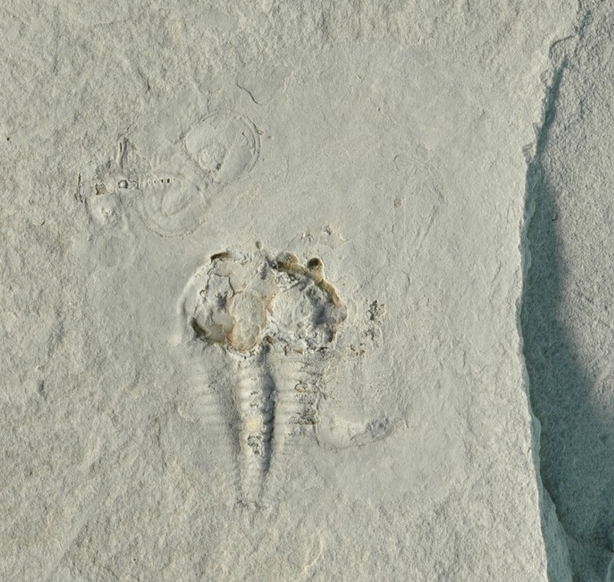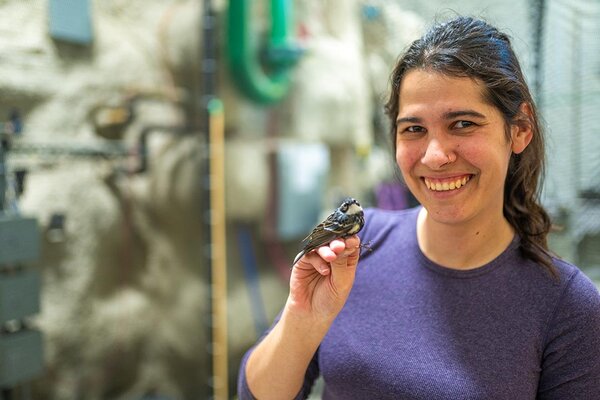
Dinner and leftovers a rare find in the fossil record
Five hundred million years ago, the droppings of an ancient sea creature provided a feast for other animals
By Colleen MacPherson
Fossils always have interesting stories to tell, like the one about what an ancient sea creature had for dinner and the uninvited guests that came later to deal with the leftovers.
In a paper recently published in Palaios, Brian Pratt, professor in the Department of Geological Sciences at the U of S and Fellow of the Geological Society of America, describes an unusual find: evidence of soft-bodied animals that hunted, ate and pooped some 500 million years ago at the bottom of a sea that covered the remote Mackenzie Mountains in the Northwest Territories.
“It was amazing luck,” said Pratt, “because body parts and poop decay, and so are rarely preserved in the fossil record. This find is one more piece in the puzzle that helps us understand ancient ecosystems and food webs.”
Working with Julien Kimmig, his former graduate student who is now with the University of Kansas Biodiversity Institute, Pratt determined the dark green shale he first stumbled upon in 1983 was home to “an unknown predator” about the thickness of an adult index finger that lived in vertical burrows. There is evidence the animal moved laterally in its burrow, he said, likely the result of muscle contractions related to digestion. But it was the fecal pellets it left behind that Pratt and Kimmig found most interesting.
“They look like black, disc-shaped stains about the size of a dime,” he said of the pellets, technically called coprolites. “We found they were made up of flakes and bits of the leathery skin of some kind of worm and crayfish shells, which suggests this was a selective hunter, a picky eater.”
Even more interesting was the presence, in the pellets, of two kinds of trilobites and an unidentified conical-shelled creature. “It’s very unlikely they had been digested by the predator, but if they were feeding on the poop, why weren’t they eating at the edges?” said Pratt. “Then I had a eureka moment—it was because they were at the bottom of the burrow. So we’ve got an animal that fills its plate with its favourite food, digests it all, poops in its burrow and swims away leaving the coast clear for scavengers to move in.”
Pratt’s research also proved that one of the trilobites, previously thought to be a “floater or swimmer,” was in fact a bottom dweller.
Ecologists know that fecal material is a food source for some animals, “but it’s so rarely preserved in the rock record because it decays. This particular find shows these creatures were both consuming food and making food for others.”
There is still more to learn from the specimens collected at what they called the Ravens Throat River Lagerstätte. Pratt is interested in the tiny flecks of native silver found in the rock because “that’s just weird.” He also wants to explore the deeper question of what conditions existed at the Ravens Throat River site, and at the famous Burgess Shale site, that allowed for preservation of material that normally decays.
“Many suspect it was very low levels of oxygen in the sediment and in the lowest layer of the sea water, but we have evidence that that’s not the case. We need to find another reason why decay was not always complete.”


